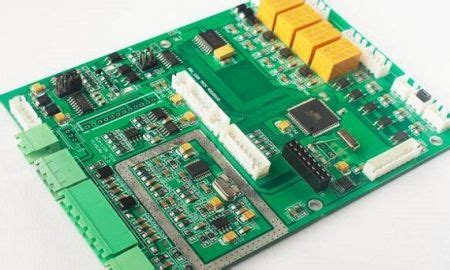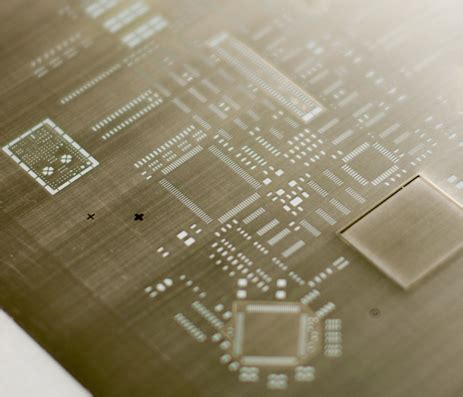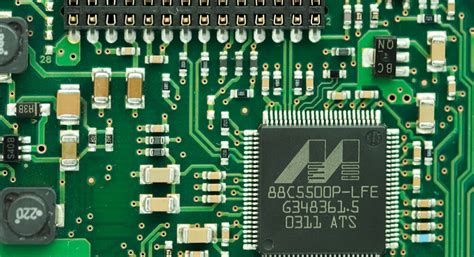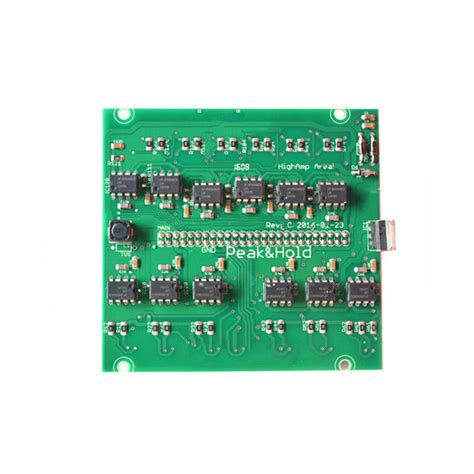Flex pcb coverlay
Understanding The Role Of Coverlay In Flex PCB Design
In the realm of flexible printed circuit boards (PCBs), the coverlay plays a pivotal role in ensuring both the functionality and durability of the circuit. As electronic devices continue to shrink in size while increasing in complexity, the demand for flexible PCBs has surged.
These circuits are essential in applications where space constraints and mechanical flexibility are paramount, such as in wearable technology, medical devices, and advanced consumer electronics. Understanding the role of coverlay in flex PCB design is crucial for engineers and designers aiming to optimize performance and reliability.
Coverlay, essentially a protective layer, is applied to the flexible PCB to shield the delicate circuitry from environmental factors and mechanical stress.
Typically composed of polyimide films with an adhesive layer, coverlay serves as a robust barrier against moisture, dust, and other contaminants that could potentially compromise the circuit’s integrity. Moreover, it provides mechanical protection, safeguarding the copper traces from abrasion and bending stresses that are inherent in flexible applications. This protective function is vital, as it extends the lifespan of the PCB by preventing physical damage and ensuring consistent performance over time.
In addition to its protective capabilities, coverlay also plays a significant role in the electrical performance of the flex PCB.
By covering the exposed copper traces, it helps to maintain electrical insulation, thereby preventing short circuits and ensuring signal integrity. This is particularly important in high-frequency applications where even minor disruptions can lead to significant performance issues. Furthermore, the coverlay can be selectively applied, allowing for the exposure of specific areas for soldering or component placement, thus providing design flexibility and facilitating complex circuit layouts.
The choice of coverlay material and its application process are critical considerations in flex PCB design.
Polyimide is the most commonly used material due to its excellent thermal stability, chemical resistance, and mechanical properties. However, the adhesive used in conjunction with the polyimide film must also be carefully selected to ensure compatibility with the substrate and to withstand the thermal cycles encountered during manufacturing and operation. The application process typically involves a combination of heat and pressure to bond the coverlay to the substrate, ensuring a secure and uniform adhesion.
Moreover, the thickness of the coverlay must be optimized to balance protection with flexibility.
A thicker coverlay provides enhanced protection but may reduce the flexibility of the PCB, which could be detrimental in applications requiring frequent bending or movement. Conversely, a thinner coverlay may offer greater flexibility but at the expense of reduced mechanical protection. Therefore, designers must carefully evaluate the specific requirements of their application to determine the appropriate coverlay thickness.
In conclusion, the coverlay is an indispensable component in flex PCB design, offering essential protection and contributing to the overall electrical performance of the circuit. By understanding its role and carefully considering material selection, application processes, and thickness, designers can enhance the reliability and functionality of their flexible PCBs. As technology continues to evolve, the importance of coverlay in ensuring the success of flexible electronic applications will undoubtedly remain a critical focus for engineers and designers alike.

Benefits Of Using Polyimide Coverlay In Flexible Circuits
Polyimide coverlay is an essential component in the construction of flexible printed circuit boards (PCBs), offering a range of benefits that enhance the performance and reliability of these circuits. As the demand for flexible electronics continues to grow across various industries, understanding the advantages of using polyimide coverlay becomes increasingly important.
One of the primary benefits of polyimide coverlay is its exceptional thermal stability.
Polyimide materials can withstand high temperatures, making them ideal for applications that involve significant heat exposure. This thermal resilience ensures that the flexible circuits maintain their integrity and functionality even in challenging environments, thereby extending the lifespan of the electronic devices in which they are used.
In addition to thermal stability, polyimide coverlay provides excellent mechanical protection.
Flexible circuits are often subjected to bending, twisting, and other forms of mechanical stress. The robust nature of polyimide coverlay helps protect the delicate circuitry from physical damage, reducing the risk of circuit failure. This mechanical durability is particularly beneficial in applications such as wearable technology and automotive electronics, where flexibility and reliability are paramount. Furthermore, polyimide coverlay offers superior chemical resistance. In many industrial and consumer applications, flexible circuits may be exposed to various chemicals that could potentially degrade the materials used in their construction. Polyimide’s resistance to a wide range of chemicals ensures that the circuits remain unaffected by such exposure, maintaining their performance and reliability over time.
Moreover, the use of polyimide coverlay contributes to the miniaturization of electronic devices.
As technology advances, there is a growing demand for smaller, more compact devices. Polyimide coverlay’s thin and lightweight properties allow for the design of flexible circuits that occupy minimal space without compromising on performance. This characteristic is particularly advantageous in the development of compact consumer electronics, medical devices, and aerospace applications, where space and weight are critical considerations. Additionally, polyimide coverlay enhances the electrical insulation of flexible circuits. The material’s excellent dielectric properties ensure that the circuits are well-insulated, preventing electrical interference and ensuring reliable signal transmission. This is crucial in high-frequency applications where signal integrity is of utmost importance.
Furthermore, polyimide coverlay is compatible with a variety of surface finishes, making it versatile for different manufacturing processes.
This compatibility allows for greater flexibility in the design and production of flexible circuits, enabling manufacturers to tailor the circuits to specific application requirements. The adaptability of polyimide coverlay ensures that it can meet the diverse needs of various industries, from consumer electronics to telecommunications and beyond. In conclusion, the use of polyimide coverlay in flexible circuits offers numerous benefits that enhance the performance, reliability, and versatility of these circuits. Its exceptional thermal stability, mechanical protection, chemical resistance, and electrical insulation make it an ideal choice for a wide range of applications. As the demand for flexible electronics continues to rise, the advantages of polyimide coverlay will play a crucial role in meeting the evolving needs of modern technology. By leveraging these benefits, manufacturers can develop innovative and reliable electronic devices that cater to the demands of today’s dynamic market.

Comparing Coverlay And Solder Mask In Flex PCB Applications
In the realm of flexible printed circuit boards (PCBs), the choice between coverlay and solder mask is a critical decision that can significantly impact the performance and durability of the final product. Both materials serve as protective layers, yet they differ in composition, application, and functionality. Understanding these differences is essential for engineers and designers who aim to optimize the performance of flex PCBs in various applications.
Coverlay, typically composed of polyimide films with an adhesive layer, is primarily used in flexible circuits to protect the copper traces from environmental factors such as moisture, dust, and mechanical abrasion.
Its robust nature makes it particularly suitable for applications where the circuit will undergo frequent bending or flexing. The polyimide material offers excellent thermal stability, which is crucial in high-temperature environments. Moreover, coverlay provides superior mechanical protection, ensuring that the delicate copper traces remain intact even under strenuous conditions. This makes it an ideal choice for applications in the automotive, aerospace, and medical industries, where reliability and durability are paramount.
On the other hand, solder mask, a liquid photoimageable material, is more commonly associated with rigid PCBs but is also used in some flexible PCB applications.
It serves to protect the copper traces from oxidation and prevents solder bridges during the assembly process. Solder mask is applied as a thin layer over the copper traces and is then cured to form a hard, protective coating. While it offers good protection against chemical and environmental damage, its mechanical protection is generally inferior to that of coverlay. This limitation makes solder mask less suitable for applications where the PCB will be subject to frequent flexing or mechanical stress.
When comparing coverlay and solder mask, one must consider the specific requirements of the application.
For instance, if the primary concern is mechanical protection and flexibility, coverlay is the preferred choice. Its ability to withstand repeated bending without cracking or delaminating ensures the longevity of the circuit in dynamic environments. Conversely, if the application involves less mechanical stress and more emphasis on chemical resistance and ease of manufacturing, solder mask may be more appropriate. Its application process is generally simpler and more cost-effective, making it a viable option for less demanding applications.
Furthermore, the choice between coverlay and solder mask can also influence the overall design and manufacturing process of the flex PCB.
Coverlay requires precise alignment and lamination, which can add complexity and cost to the manufacturing process. However, its benefits in terms of durability and flexibility often outweigh these challenges. Solder mask, with its simpler application process, can reduce manufacturing time and cost, but may require additional considerations to ensure adequate protection in more demanding environments.
In conclusion, the decision between coverlay and solder mask in flex PCB applications hinges on a careful evaluation of the specific needs and constraints of the project.
While coverlay offers superior mechanical protection and flexibility, solder mask provides a cost-effective solution for applications with less stringent mechanical requirements. By understanding the distinct advantages and limitations of each material, engineers and designers can make informed decisions that enhance the performance and reliability of their flexible PCB designs.
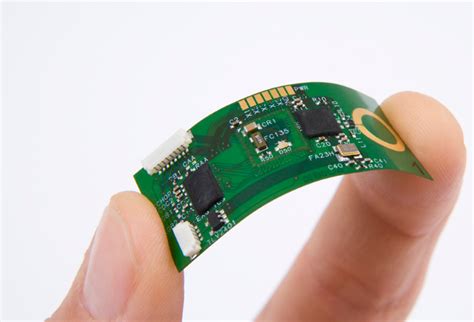
Best Practices For Applying Coverlay In Flex PCB Manufacturing
In the realm of flexible printed circuit board (PCB) manufacturing, the application of coverlay is a critical process that demands precision and expertise. Coverlay serves as a protective layer, safeguarding the delicate circuitry from environmental factors such as moisture, dust, and mechanical abrasion. To ensure optimal performance and longevity of flex PCBs, it is essential to adhere to best practices when applying coverlay. This article delves into these practices, offering insights into achieving superior results.
To begin with, selecting the appropriate coverlay material is paramount.
Coverlay is typically composed of polyimide films with adhesive coatings, and the choice of material should align with the specific requirements of the application. Factors such as thermal resistance, flexibility, and dielectric properties must be considered. For instance, applications that involve high-temperature environments may necessitate the use of high-temperature polyimide films to prevent degradation.
Once the material is selected, the next step involves meticulous preparation of the flex PCB surface.
Ensuring a clean and smooth surface is crucial for effective adhesion. Any contaminants, such as dust or oils, can compromise the bond between the coverlay and the substrate. Therefore, thorough cleaning using appropriate solvents or cleaning agents is recommended. Additionally, surface roughening techniques, such as plasma treatment, can enhance adhesion by increasing the surface area available for bonding.
Transitioning to the application process, precise alignment of the coverlay is essential.
Misalignment can lead to exposed circuitry, which defeats the purpose of the coverlay. Utilizing alignment tools and fixtures can aid in achieving accurate placement. Moreover, maintaining consistent pressure during the lamination process is vital to ensure uniform adhesion across the entire surface. This can be achieved through the use of vacuum lamination techniques, which apply even pressure and eliminate air bubbles that could otherwise lead to delamination.
Temperature control during the lamination process is another critical factor.
The adhesive used in coverlay materials is typically heat-activated, requiring specific temperature profiles to achieve optimal bonding. It is important to follow the manufacturer’s recommended temperature settings and dwell times to prevent issues such as incomplete curing or thermal damage to the flex PCB. Monitoring and controlling the temperature throughout the process can significantly enhance the quality of the final product.
Furthermore, post-lamination inspection is a best practice that should not be overlooked.
Visual inspection, along with automated optical inspection (AOI) systems, can help identify defects such as misalignment, air bubbles, or incomplete coverage. Early detection of these issues allows for corrective actions to be taken before the flex PCBs proceed to subsequent manufacturing stages.
In conclusion, the application of coverlay in flex PCB manufacturing is a nuanced process that requires careful attention to detail. By selecting the appropriate materials, preparing the surface meticulously, ensuring precise alignment, maintaining temperature control, and conducting thorough inspections, manufacturers can achieve high-quality results. These best practices not only enhance the performance and reliability of flex PCBs but also contribute to the overall efficiency and success of the manufacturing process. As technology continues to advance, adhering to these practices will remain essential in meeting the ever-evolving demands of the electronics industry.


